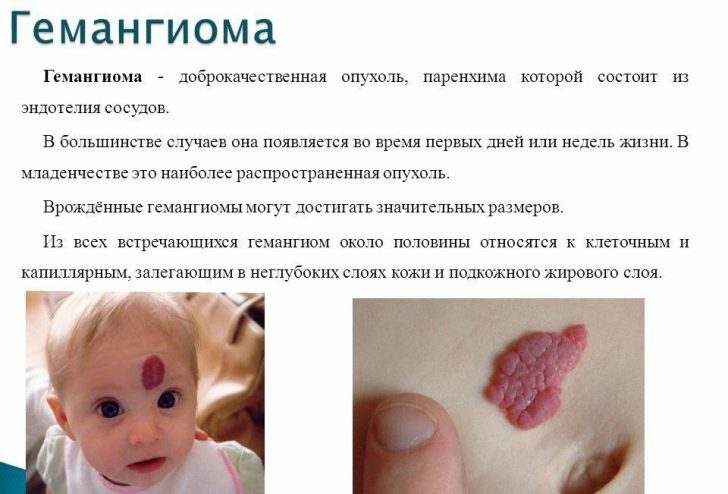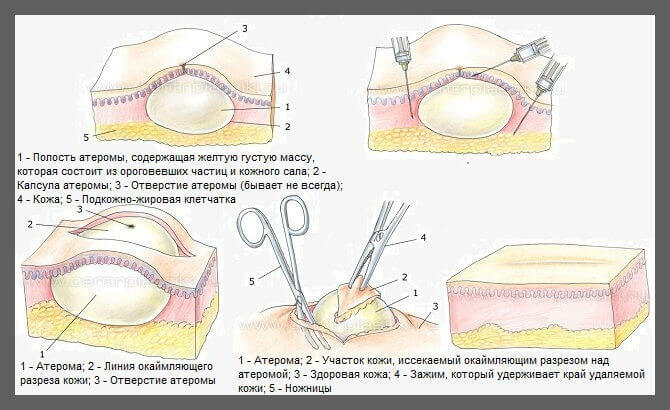Lichen planus in humans: symptoms, treatment, photos of patients
Lichen planus in humans (Wilson's lichen) is a very common skin disease. It is referred to as chronic dermatoses, affecting mainly the skin, nail plates and mucous membranes. This disease is distinguished by a long course of the disease and a wide variety of manifestations.
Red lichen most often affects elderly people, but it may also manifest in younger years. This form is not contagious, which means it is not transmitted from person to person either through touch or in any other way.
Content
- Causes of occurrence
- Wilson's lichen symptoms
- Lichen planus forms
- Warty (hypertrophic) form of lichen
- Pointed shape
- Ring shape
- Bubble shape
- Sclerosing form
- Atrophic form
- Erosive and ulcerative form
- Diagnostics
- Possible complications
- Treatment
- Use of medications
- ethnoscience
- Prophylaxis
- Video
Causes of occurrence
Despite the fact that this disease has existed for a long time, and a lot has been devoted to its research the amount of time, neither the causes of the onset of pathology, nor the ways of its distribution.
The bulk of specialists in this field of medicine are inclined to the autoimmune nature of lichen planus, while others identify a number of possible reasons:
- neurogenic pain (in their favor is the fact that most often Wilson's lichen develops against the background of any stress or shock of the nervous system).
- allergic reaction.
- hereditary transmission from generation to generation;
- due to the introduction of the virus into the human body.
Lichen planus is more common on the forearms and lower legs from the inside, elbow and knee bends also suffer, and its manifestation on the trunk and scalp is still possible. Susceptible to toenail disease and oral mucosa.
Very rarely, this pathology manifests itself in children, however, the older the patient becomes, the higher the likelihood of developing the disease.
Also, the dependence of the form of lichen and the age of the patient has been established. For example,
- the skin is more likely to be affected when the patient is about 40-45 years old;
- patients of more advanced age, namely over 55 years old, are susceptible to damage to the mucous membranes.
Despite the fact that the root causes are not known, the factors that can trigger the onset of symptoms and cause the rapid progression of the onset of the disease are known:
- chronic diseases of the gastrointestinal tract;
- various hormonal disorders in the body. Such as: diabetes, thyroid problems and others.
- hypertonic disease.
- constant stressful situations at home and at work. Nervous state of the patient.
- allergy and predisposition to it.
- uncontrolled use of drugs such as analgesics and anti-inflammatory drugs. It has been proven that gold injections prescribed for rheumatoid arthritis and antimalarial pills are also capable of catalyzing the onset of the disease.
- acquired infections of bacterial or viral origin (hepatitis, tuberculosis).
- if one of the patient's relatives suffered from lichen redness, then the likelihood of the manifestation of the disease is very high.
- the risk of developing pathology increases with the age of a person.
- various injuries of the mucous membranes of the oral cavity.
Also, observations of patients suffering from this ailment revealed that the primary appearance lichen symptoms, as well as the probable return of the disease often occur against the background of severe nervous exhaustion, lack of sleep, or simply severe chronic fatigue.
The appearance of lichen red in the oral cavity can be triggered by rubbing the mucous membrane with low-quality dentures, or due to microtraumas received by the sharp edges of the teeth.
Wilson's lichen symptoms








There are many manifestations of Wilson's lichen. They all depend on the location, form and characteristics of the disease. However, in any case, red and shiny papules are present:
- They are small in size and do not merge with each other (see photo above). However, as the disease progresses, the bubbles can grow and reach the size of a lentil.
- The first formations most often appear on the upper or lower extremities in the area of the joints, later they spread to other parts of the body. From the characteristic features, it can also be distinguished that the papules are of the correct shape and are often depressed in the middle.
- Bubbles tend to be located next to each other, forming circles, garlands and various lines. They can appear both at a distance from each other and tightly adjacent to the edges, however, the formation of large plaques does not occur. The size of such a cluster can reach one centimeter. The appearance of papules is accompanied by severe itching.
- As the disease progresses, the surface of the formations becomes more rough and takes on a grayish tint due to the formed scales. The papules themselves become bluish or dark red. When the rash heals, brownish pigmented marks remain on the skin.
- If the nail plate is affected, then first of all its surface is disturbed, which becomes more bumpy. The color of the nail also changes. Excessive fragility and fragility of tissues appears.
- Damage to the mucous membrane is characterized by the presence of shiny, whitish papules. They are localized on the lateral surface of the cheeks, palate, back of the tongue, lips and gums and in their appearance resemble a lace mesh.
- A pulling sensation and burning sensation appears in the oral cavity, as well as increased sensitivity to spicy and hot food.
- If the disease progresses to a severe stage with the appearance of ulcers and erosions, then the pain begins to be felt due to any foreign object in the mouth. Eating becomes excruciating.
Read also:Urticarial rash
Lichen planus forms
There are several forms of lichen planus:
- Warty form.
- Pointed shape.
- Ring shape.
- Bubble shape.
- Sclerosing form.
- Atrophic form.
- Erosive and ulcerative form.
Lichen Wilson has a huge number of clinical manifestations. For example, in combination with another concomitant disease, the manifestation of an atypical form of the disease is possible, up to the absence of papules. This greatly complicates diagnosis and, consequently, treatment.
Warty (hypertrophic) form of lichen
At first, a characteristic rash appears, but over time it begins to take the form of growths, very similar to warts. The characteristic color of the formations is dark brown or purple. This process is accompanied by severe itching, which is difficult to treat. The growths themselves are denser and thicker than standard bubbles. Almost always, this form of lichen affects the shins and almost never spreads to other parts of the body.
Pointed shape
In this case, the hair follicle suffers first of all. In its place, a kind of growth begins to form, very much like a thorn in its shape, protruding above the surface of the skin. The scalp is most often affected and less often other parts of the body. Even after complete recovery, the skin is not fully restored, and scars remain in the places of formation.
Ring shape
A distinctive feature of this variety of lichen is the rapid growth of foci with simultaneous healing of the skin inside the papule. The result is a ring-shaped plaque. Most often, such sores are localized on the genitals of a man, and it is easy to confuse them with manifestations of syphilis. That is why this form of lichen is difficult to diagnose and treat.
Bubble shape
A very rare type of lichen. With it, characteristic bubbles appear, including serous fluid, sometimes even with an admixture of blood. They can form against the background of typical bubbles, or without them.
Read also:Symptoms and treatment of skin keratoacanthoma
Most often, this lichen is located on the feet and legs.
Sclerosing form
A rather rare phenomenon characterized by the appearance of colloid-like formations on the skin. In this case, atrophy of the skin is observed. If lichen of this type is stirred on the scalp of a person, then baldness occurs in the places of damage.
Atrophic form
The disease begins as a typical form and at first the symptoms do not differ from the standard. But later, when the rash begins to disappear, keratinized areas of the skin remain in its place.
Basically, the knee and elbow joints in the folds are affected. Point areas of atrophic baldness may form on the head.
Erosive and ulcerative form
The most severe of all forms of lichen. Most often, mucous membranes suffer in places where they were damaged due to physical contact with uncomfortable dentures, sharp teeth and other objects.
The mucous membrane swells and turns red, and then ulcers begin to form on it, around which small papules characteristic of lichen planus are located. Erosions are usually irregular in shape and are covered with plaque, damage to which causes minor bleeding.
Ulcers can be located singly or collect in clusters. They are always very painful.
As treatment progresses, they become covered with a layer of epithelium, but the possibility of recurrence is very high. In rare cases, areas of atrophied skin may form at the site of the healed skin.
One of the most dangerous complications of this form is the high risk of ulcers degenerating into malignant tumors.
If the lichen is not treated in time, then, as it develops, it will seize more and more new areas of the skin, turning their acute form into a chronic one. With each new exacerbation, the papules will spread further and further throughout the body, leaving behind patches of darkened, almost black skin during the period of remission.
Diagnostics
If a person has lichen lichen in a typical form, with classic symptoms, then the diagnosis and diagnosis does not cause any difficulties. The only disease that, according to external signs, can give similar symptoms is syphilis, but it has its own characteristics, and after analyzes and a thorough examination, the diagnosis is always specified.
For a correct diagnosis, the following is assessed:
- the color scheme of the affected skin areas;
- the shape and size of the papules;
- the appearance of plaques, the presence of nodules, pits, seals in the center of the formations.
All these features make it possible to highlight the red flat deprive a person among similar diseases such as psoriasis or syphilis. In this case, additional analyzes may not even be required.
If the rash is on the mucous membrane, then the symptomatology becomes similar also with lupus erythematosus and leukoplakia. To clarify the diagnosis, you must first exclude them by making appropriate laboratory tests. With lichen reddens, changes in the blood and urine are not observed, only in rare cases are changes in the number of leukocytes possible or ESR.
Also, to clarify the nature of the disease, the doctor may take a scraping from the skin. The biopsy is done with local anesthesia. If the rash is located in the oral cavity, then a dentist can also diagnose in addition to a dermatologist.
Read also:Boil: how it is formed, symptoms, photos, how to treat
Also, during the examination, special attention is paid to the state of the digestive and nervous systems, and in the case of detection of deviations in their functioning, additional examination is required from the relevant specialists.
Possible complications
Perhaps lichen planus in humans does not seem to be a very dangerous disease, but it is not. The risk of developing complications in the absence or improper treatment is very high.
The most common and scary problems are:
- Change in skin pigmentation. Even when the lichen is healed and the papules have gone, brown or gray pigmentation spots may remain on the skin.
- In about 2% of cases, the formations are converted into a cancerous tumor.
Treatment

The choice of drugs for cure red lichen planus depends on the form of damage to the body. So, if the oral cavity is damaged, its obligatory sanitation and removal of traumatic factors are required. And only then therapy is prescribed.
Use of medications
For each form of lichen, the doctor selects an individual therapy. However, there are a number of measures that are prescribed for all forms:
- The use of sedatives such as motherwort, valerian, antidepressants and tranquilizers. This will help normalize the functioning of the nervous system.
- The use of vitamins gives very good results.
- Corticosteroid medications.
- For the treatment of the chronic form of lichen, drugs that improve the supply of oxygen to the tissues are successfully used.
- To relieve unpleasant symptoms and for external therapy, the application of hormonal ointments to the affected surfaces helps well. They relieve irritation and itching well. A very good effect is observed when using ointments with corticosteroid hormones.
- For the warty form, tar-based ointments are recommended.
- Patients are often prescribed antihistamines.
In addition to drug therapy, physiotherapeutic methods of treatment have shown high efficiency:
- Electrocoagulation;
- Photo and laser therapy.
ethnoscience
Treatment of lichen red with folk remedies is widespread. Recommended herbal remedies include:
- Sea buckthorn oil. A very effective remedy. It is applied by application to the affected surface. Approved for use on mucous membranes. In addition, it is recommended to take it internally every morning for a teaspoon.
- Ointment from hops, cones and calendula. First, a strong broth is prepared, and then it is mixed with petroleum jelly. The resulting cream is applied to the papules once a day.
- Calendula decoction. Pour 1 tablespoon of calendula with a glass of boiling water, let it brew for an hour. A decoction of this plant in the form of lotions is applied to sore spots.
Prophylaxis
As you know, any disease is better to prevent than to cure. A number of simple recommendations will greatly reduce the risk of developing the disease.
- To prevent the risk of developing the disease, you should carefully monitor the health of your body and consult a doctor promptly. Carefully monitor and exclude from circulation objects that constantly injure the skin and mucous membranes.
- Proper nutrition, adherence to a regimen and maintaining personal hygiene can significantly reduce the likelihood of acquiring pathology.
- It is recommended to lead a healthy lifestyle, play sports and give up bad habits.
- Hardening will help to avoid many diseases, including lichen lichen.
Deprive of a sufficiently serious disease that can give dangerous complications. But with correct and timely treatment, the forecasts are very favorable and the patient's complete recovery is possible.



